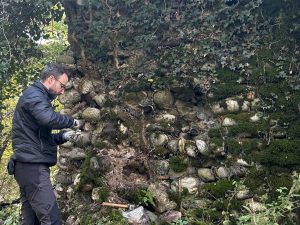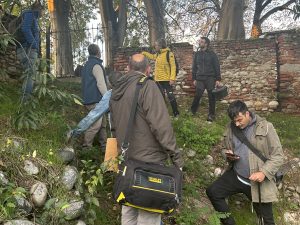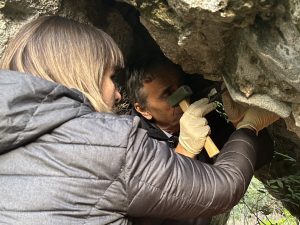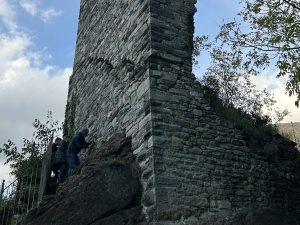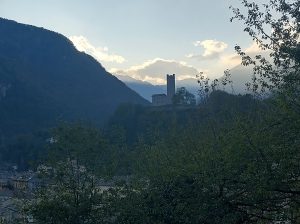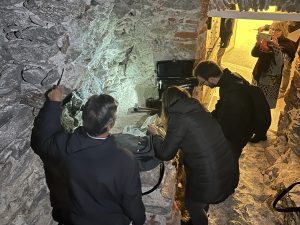Autumn collection of archaeological data for “The Times of Castles”, which visited five historical sites that bear witness to the fortification of northern Piedmont.
The first site, Castrum Radi, is a hidden gem in Valsesia. This fortified medieval settlement offers a unique insight into life in the Middle Ages, with traces of ecclesiastical structures, defensive walls and imposing towers. The research carried out at this site has revealed important details about the material structure of the castle, providing a broader view of the ancient topography of the area.
The second site studied is the medieval castle of Palazzo De Visard in Pombia. This building, which stands majestically on the right bank of the River Ticino, still preserves part of its original wall and the base of a tower.
In Gravellona Toce, the project research team visited Motto Castle, a medieval fortress built on a rocky spur overlooking the Strona river. Known as Castrum Gravallone from 11th-12th century sources, it has undergone several transformations and extensions over the centuries.
In Pont Canavese, between the Orco and Soana valleys, three towers were visited: the San Martino tower, belonging to the Castrum Pontis, the Ferranda tower, belonging to the Counts of Valperga, and the Tellaria tower of the Castlass.
The fourth site visited is the Castle of Baratonia in Varisella, a fascinating historical site dating back to at least 1090. These medieval ruins, once the heart of the Viscounty of Baratonia, offer a journey back in time. A short walk from the Chapel of San Biagio takes visitors along a path to the remains of the castle, where the remains of the Romanesque chapel and the central dungeon can be seen.
Bric San Viter, in Pecetto Torinese, is the fifth and last site visited. In the Middle Ages it was a strong fortress, the remains of which are still visible, together with a village and a church. Rediscovered in 1991, Bric San Viter has been a constant source of study for historians and archaeologists, representing a complex settlement pattern and fundamental to understanding the region’s past.
Researchers from “The Times of Castles” took mortar samples from the walls. Subsequent analysis of the mortar’s properties and recovery of organic residues for C14 radiocarbon dating are crucial steps in determining not only the age of the structures, but also understanding the changes they have undergone over the centuries. “The Times of Castles” project is not just a historical investigation, but a bridge between the present and the past, offering a deeper understanding of our cultural and architectural roots. Through science and history, we can appreciate the complexity and beauty of our heritage and perhaps learn valuable lessons for the future.


